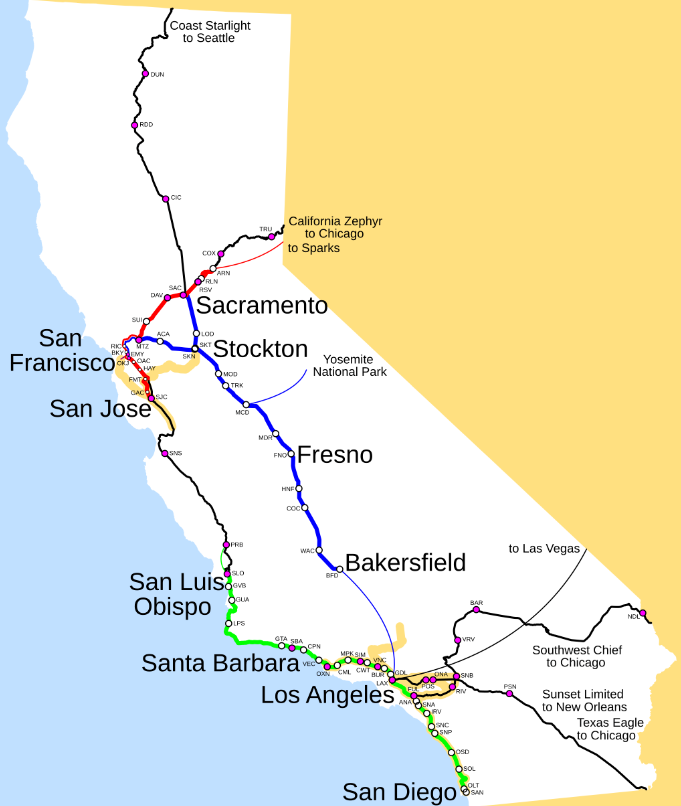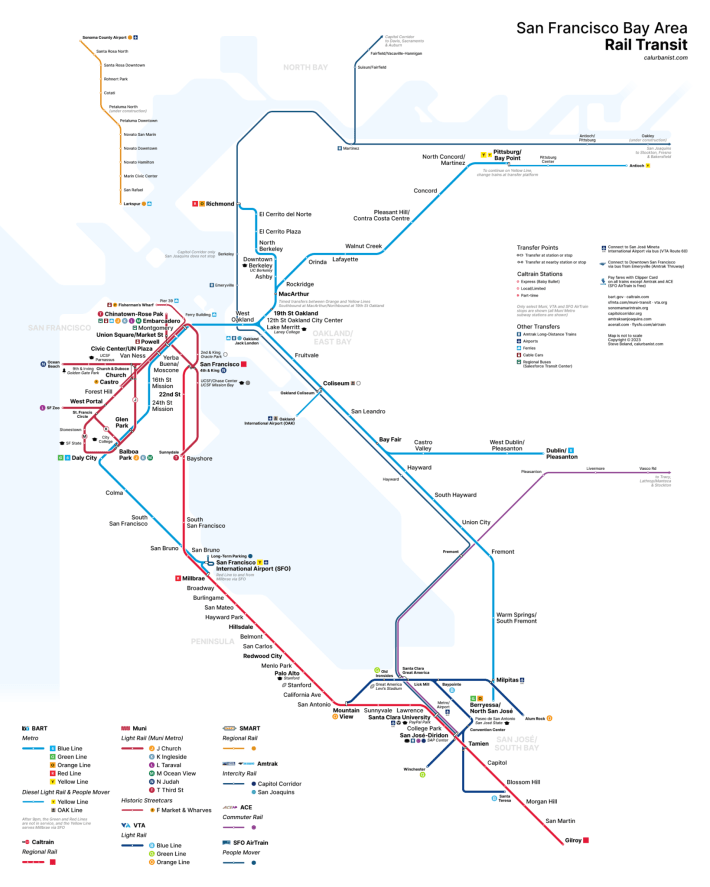Amtrak operates nearly 70 trains a day in the state of California, carrying millions of people. "Before the pandemic, Amtrak's ridership in California averaged nearly 12 million people; that's almost as much as the vaunted Northeast Corridor between Boston and Washington, DC. Last year, ridership continued its recovery from the pandemic, reaching 8 million or so passengers," wrote Jim Mathews, President & CEO of the Rail Passengers Association, in an email to Streetsblog.
Yet somehow the mainstream media seems unaware that there are trains in California, let alone the Bay Area. Take, for example, Thursday's "Pack your patience: Labor Day travel expected to shatter records," transportation reporter Kristen Bender's story in the San Jose Mercury News.
"The last holiday weekend of the summer is expected to be a historically busy one with people traveling by car, boat and plane, and filling parks, beaches and entertainment hot spots" was the lead. But there's no mention anywhere in the piece about the most obvious way to avoid traffic and airport crowds: trains.
"It's unfortunate that some in the Bay Area media don't seem to know that California has 74 Amtrak stations and hundreds of more commuter and rail transit stations—like BART, Caltrain, SMART, and ACE—carrying millions of passengers," added rail advocate Dennis Lytton, also in an email to Streetsblog. "Incomplete reporting like this makes it harder to advocate for more trains."

One finds the same pattern in national publications, as in "How to Avoid Traffic Jams and Airport Crowds This Labor Day Weekend," Wednesday's story in CondeNaste Traveler by Jessica Puckett. Aren't trains, when they're available, the single best way to avoid traffic jams and airport crowds? And yet the word "train" is also nowhere to be found in the piece.
"There's a person mentioned in the Mercury News article going from the Bay Area to Bakersfield. If traffic cooperates, driving would be perhaps an hour and a half faster than taking the train," wrote Mathews. "But you'll spend $116 to $120 on gas, and as the article notes, traffic is likely NOT to be cooperative. Amtrak's round-trip fare for that trip is $100 even—a little less than you'd pay for gas—and the trip is hassle-free on the San Joaquin service."
The Capitol Corridor between San Jose, the Bay Area, and Sacramento is running a two-ride-for-the-price-of-one promotion. The San Joaquin has its "Friends and Family Discount," which offers 50 percent off on up to five companion fares. The SMART train, from Larkspur to Sonoma, lets kids ride free through Labor Day. This helps trains remain price-competitive with driving even when people travel in groups.

Despite these great deals, the same pattern of ignoring rail in its Labor Day travel reporting can be found at NBC's Bay Area affiliate, KRON4, and others.
From Streetsblog's view, mainstream media transportation reporters are supposed to give readers legitimate travel advice; instead, they sometimes seem to just parrot the car lobby. Sure, California's rail network, thanks to decades of disinvestment, is lacking. It doesn't cover a lot of the state and it's prone to its own delays, thanks to being forced to share tracks with freight trains. But why not at least acknowledge its existence, utility, and advantages over driving?
"Trains are often faster than driving and generally are cheaper," wrote Mathews. "Plus, your stress level is significantly reduced, and you can relax, work, read, or otherwise enjoy the ride while saving a little money."





